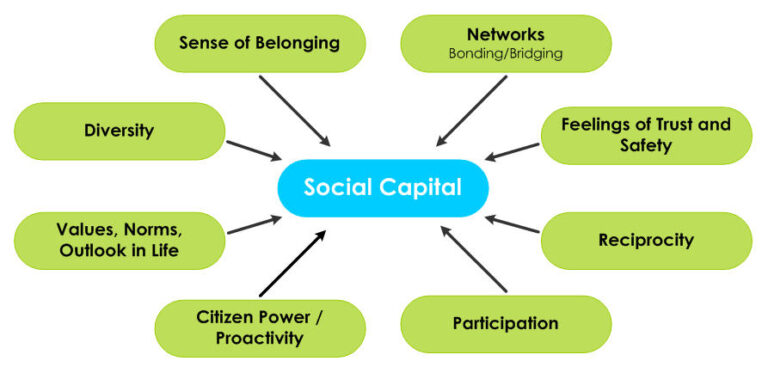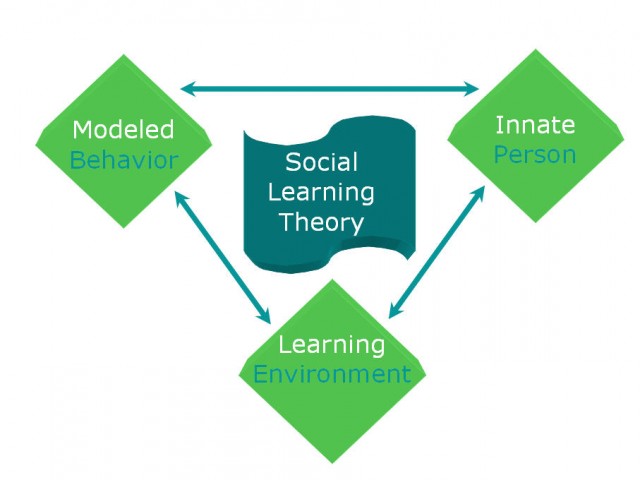Self-Leadership
One of the primary aims of self-leadership is to achieve higher performance and effectiveness through behavioral and cognitive strategies that...
Read More
Self-Monitoring
Self-monitoring refers to the extent to which one attends to social cues and attempts to adapt behavior to control the...
Read More
Sex Discrimination
Discrimination refers to a person’s behavior toward another based on the other’s social characteristics, such as age, sex, ethnicity, or...
Read More
Sexual Harassment
Sexual harassment is behavior of a sexual nature that harms those exposed to it. The behavior may be intentional or...
Read More
Sexual Orientation and Careers
Although gay men and lesbians constitute between 4 percent and 17 percent of the workforce, a larger proportion than many...
Read More
Single Parents and Careers
By the mid-1990s, 1 of every 4 families in the United States with children under 18 was a single-parent family,...
Read More
Social Capital
An inclusive understanding of the concept views social capital as the potential resources derived from an individual’s social relationships as...
Read More
Social Learning Theory Of Career Development
People work at an incredibly wide number of jobs. A major question is How can we explain how people find...
Read More
Socioeconomic Status
Socioeconomic status (SES) is the relative position of a family or individual along a hierarchical social structure, based on access...
Read More
Spirituality and Careers
Although the desire to experience and express spirituality in one’s work appears to be on the increase, there are two...
Read More
Human Life Cycle
Theorists who have written about the human life cycle include Sigmund Freud, Jean Piaget, Lawrence Kohlberg, Erik Erickson, and Daniel...
Read More
Willard Libby
Willard Frank Libby was an American chemist whose technique of carbon-14 (or radiocarbon) dating provided an extremely valuable tool for...
Read More
Characteristics of Life
The concept of life belongs to the basic cognitive endowment of every human. This deep anchoring makes it difficult to...
Read More
Origin of Life
One of the questions that has troubled humankind ever since it began to think about its position in the universe...
Read More
Segmentary Lineage Systems
Segmentary lineage systems are a form of decentralized and egalitarian social organization consisting of nested groups vested with the responsibility...
Read More
Linguistic Reconstruction
One of the most important tasks of historical or comparative linguistics is to try to establish a relationship between or...
Read More
Historical Linguistics
Historical linguistics is a subfield of linguistics that studies language in its historical aspects. It investigates a language or languages...
Read More
Transformational Linguistics
Transformation grammar is a way of viewing syntax first proposed in 1957 by Noam Chomsky, the most influential linguist of...
Read More
Descriptive Linguistics
Descriptive linguistics is a subfield of linguistics that studies and describes language in structural terms. In its investigation of linguistic...
Read More
Carolus Linnaeus
Carolus Linnaeus, the originator of the system of classification of animals and plants that we still use today, was eventually...
Read More
Hallucinations
Hallucinations are abnormal sensory perceptions of stimuli that occur in the absence of external stimuli. Hallucinations can be visual, auditory,...
Read More
Hare Psychopathy Checklist-Revised (2nd Edition) (PCL-R)
The Hare Psychopathy Checklist-Revised (2nd edition, PCL-R) is a 20-item rating scale for the measurement of the clinical construct of...
Read More
Hare Psychopathy Checklist: Screening Version (PCL:SV)
The Hare Psychopathy Checklist: Screening Version (PCL:SV) is a 12-item symptom-construct rating scale designed for use by expert observers to...
Read More
Hare Psychopathy Checklist: Youth Version (PCL:YV)
The construct of psychopathy as applied to children and adolescents has received increasing attention in recent years. Many researchers and...
Read More
HCR-20 for Violence Risk Assessment
The HCR-20 Violence Risk Assessment Scheme is a 20-item violence risk assessment tool, accompanied by a 97-page user’s manual. It...
Read More
Hearsay Testimony
The rules of evidence regarding the admissibility of hearsay testimony are complex, but in general, the law treats hearsay as...
Read More
Homicide Psychology
Computed across a lifespan of 75 years, there is a 1 in 200 chance that an individual in the United...
Read More
Hopkins Competency Assessment Test (HCAT)
The Hopkins Competency Assessment Test (HCAT) was developed as a brief screening measure for assessing a patient’s capacity to provide...
Read More
Hypnosis and Eyewitness Memory
The use of hypnosis to enhance the memory of a witness to a crime often results not only in some...
Read More
Inadmissible Evidence Impact on Juries
What is the impact on juror verdicts of inadmissible evidence that surfaces in the courtroom and of judicial instruction to...
Read More
Obesity and Sports ⋆ Sports Psychology ⋆ Lifestyle
Obesity is commonly defined as a body mass index of 30 kg/m2or higher. Increasing rates of obesity in many countries ...
Read More
Multiple Behavior Change ⋆ Sports Psychology ⋆ Lifestyle
Traditional approaches to helping individuals change health behaviors focus on reflective processes. In other words, in these approaches, the first...
Read More
Sports and Mental Health ⋆ Sports Psychology ⋆ Lifestyle
Mental health has been described as the emotional and spiritual resilience that enables people to enjoy life and to survive...
Read More
Exercise and Quality of Life ⋆ Sports Psychology ⋆ Lifestyle
Quality of life (QOL) assessments are instrumental in developing a more comprehensive understanding of the efficacy of disease prevention and...
Read More
Resistance Training ⋆ Sports Psychology ⋆ Lifestyle
Resistance training (RT), also commonly referred to as strength training or weight training, is a form of anaerobic exercise that ...
Read More
Runner’s High ⋆ Sports Psychology ⋆ Lifestyle
The “runner’s high” is a euphoric sensation reportedly experienced during running, usually unexpectedly, in which the runner feels a heightened...
Read More
Sedentary Behavior ⋆ Sports Psychology ⋆ Lifestyle
Exercise psychology has evolved from sport and health psychologies and has involved the study of psychological antecedents (e.g., motivational and...
Read More
Sleep And Exercise ⋆ Sports Psychology ⋆ Lifestyle
Sleep is critical to normal physiological and psychological function, and people spend nearly one third of their lives asleep. Usual sleep...
Read More
Social Marketing And Message Framing ⋆ Sports Psychology ⋆ Lifestyle
Social marketing employs commercial marketing strategies to try to solve social problems and to effect voluntary behavior change. An important...
Read More
Sports And Personality ⋆ Sports Psychology ⋆ Lifestyle
Personality has been defined as the relatively stable organization of an individual’s character, temperament, intellect, and physique, which shapes the...
Read More
Communication: Relationship Rules
A communication rule is a description of a communicative regularity relevant to social interaction. The communicative regularities contained within rules...
Read More
Friendship and Peer Interaction
Friendship refers to a broad category of interpersonal relationships communicatively accomplished with peers and characterized by voluntary, reciprocated, nonromantic affection...
Read More
Facial Expressions
When people use cues other than words to communicate, they often think first of facial expressions. Facial expressions involve movements...
Read More
Eye Behavior
People use their eyes during social interaction in three primary ways: looking in the direction of the other person’s face,...
Read More
Environment and Social Interaction
Every face-to-face interaction occurs in a specific location. Although it is typically assumed that the course of particular interactions is...
Read More
Disclosure in Interpersonal Communication
Disclosure, as a type of interpersonal communication, means revealing private information that individuals believe they own and have a right...
Read More
Deceptive Message Production
Deceit is part and parcel of daily life. It not only frequents news headlines in conjunction with political chicanery, corporate...
Read More
Deception In Discourse
The “truth-bias,” the expectation that, normally, one tells the truth, is proposed to be the cornerstone of humanity (Bok 1978)....
Read More
Deception Detection Accuracy
Much research attention has been devoted to identifying the factors that affect people’s ability to detect others’ deceptive acts. Communication...
Read More
Dating Relationships
Dating relationships have no uniform defining characteristics. They have romantic or sexual overtones, occur between two people who are not...
Read More

















































